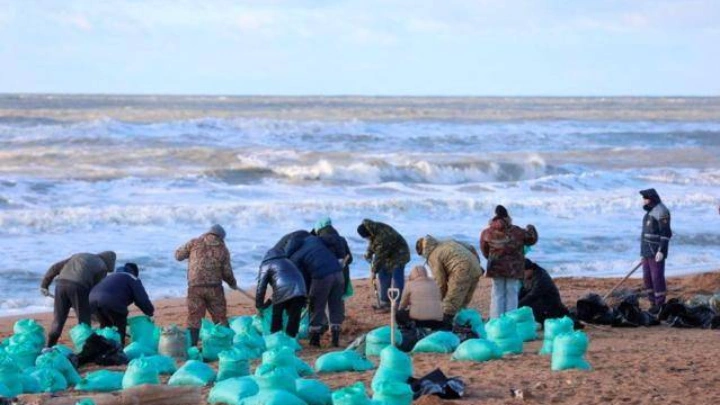Climate change has caused the rate of sea level rise to "double since 1993," according to a report
Shining BD Desk || Shining BD
According to a recent assessment, the rate of global sea level rise is accelerating substantially as a result of climate change, posing "a major threat to many millions" of people who live along coastal shores.
Sea levels have risen by an average of 10 millimeters since January 2020, reaching a new record high this year, according to the World Meteorological Organization (WMO), which issued a stark warning in its provisional State of the Global Climate in 2022 report, released Sunday. The WMO, a division of the United Nations, found a number of striking facts about climate change and its effects, including that “the past eight years are on track to be the eight warmest on record.”
But the most alarming findings may be those related to sea level rise, as the encroaching ocean threatens major coastal population centers with stronger storms, higher storm surges and flooding. “The rate of sea level rise has doubled since 1993,” the WMO noted. “The past two and a half years alone account for 10 percent of the overall rise in sea level since satellite measurements started nearly 30 years ago.”
One of the main causes of the accelerating pace of sea level rise is melting glaciers. According to the WMO, “2022 took an exceptionally heavy toll on glaciers in the European Alps, with initial indications of record-shattering melt. The Greenland ice sheet lost mass for the 26th consecutive year and it rained (rather than snowed) there for the first time in September.”
Last week, the United Nations Educational, Scientific and Cultural Organization (UNESCO) issued a report on endangered glaciers finding that one-third of the glaciers in UNESCO World Heritage sites are expected to disappear by 2050. The remaining two-thirds can be saved if greenhouse gas emissions are cut quickly and deeply enough to limit global warming to 1.5 degrees Celsius above preindustrial levels, the report concluded.
The devastating effects of melting glaciers is already being witnessed in Pakistan, where an unusually warm spring caused glacial melt that contributed to the floods that have submerged one-third of the country, displacing millions of residents.
The report’s release coincided with the opening of the U.N. Climate Change Conference in Sharm-el Sheik, Egypt, also known as COP27, with the intent of bolstering support for more aggressive action to curb emissions. Political developments, however, have diminished hopes that major new commitments of reducing greenhouse gases will be announced during COP27.
“The greater the warming, the worse the impacts,” WMO Secretary-General Petteri Taalas said in a statement. “We have such high levels of carbon dioxide in the atmosphere now that the lower 1.5°C of the Paris Agreement is barely within reach. It’s already too late for many glaciers, and the melting will continue for hundreds if not thousands of years. … Although we still measure this in terms of millimeters per year, it adds up to half to 1 meter per century, and that is a long-term and a major threat to many millions of coastal dwellers and low-lying states.”
As the oceans rise from melting glaciers and polar ice caps, they also are getting warmer as they absorb more heat, causing their volume to expand further. Ocean temperatures reached record levels in 2021 (the latest year for which data was available). Hotter oceans lead to an array of effects on the ecosystem, including coral bleaching and declining fish populations. It also powers stronger storms like Hurricane Fiona, which recently devastated Puerto Rico with 30 inches of rain, causing landslides and overflowing rivers and widespread power outages.
In 2022, the average global temperature is estimated to be about 1.15 °C above the 1850-1900 average. This actually could have been worse. For the first time in a century, La Niña, a weather pattern that causes cool water to rise to the surface in the Pacific Ocean — leading to cooler-than-usual weather — occurred for the third year in a row. The WMO estimates that this means 2022 will be the fifth- or sixth-hottest year on record, rather than the hottest ever. But the trend toward ever-higher temperatures remains clear.
“The latest State of the Global Climate report is a chronicle of climate chaos,” said U.N. Secretary-General António Guterres in response to the report’s release. “As the World Meteorological Organization shows so clearly, change is happening with catastrophic speed, devastating lives and livelihoods on every continent. Glacier melt records are themselves melting away, jeopardizing water security for whole continents. We must answer the planet’s distress signal with action — ambitious, credible climate action. COP27 must be the place, and now must be the time.”
Source: Yahoo News
Shining BD






































